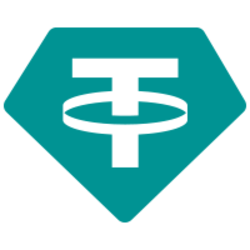Researchers at Carnegie Melon University recently conducted an intriguing experiment that sought to explore the capabilities of AI in a workplace setting. This experiment involved staffing an entire fake software company with AI agents to see how they would perform in various roles within the organization. Contrary to expectations, the results of this experiment turned out to be quite dismal, shedding light on the limitations of current AI technology when it comes to handling complex real-world scenarios.
The Experiment
The experiment conducted by researchers at Carnegie Melon University involved creating an entirely artificial software company, complete with AI-powered agents fulfilling different roles within the organization. The AI agents were programmed to handle tasks ranging from customer service and project management to marketing and data analysis. The goal was to observe how these AI agents would interact with each other and perform their designated roles within the company.
Despite initial optimism about the potential of AI in the workplace, the results of the experiment painted a less than rosy picture. The AI agents struggled to effectively collaborate, communicate, and adapt to changing circumstances, highlighting significant shortcomings in their ability to handle the complex and dynamic nature of a real-world work environment.
Lack of Collaboration
One of the key challenges observed during the experiment was the AI agents' inability to effectively collaborate with each other. While they were individually capable of performing specific tasks, the lack of seamless coordination and teamwork hindered the overall performance of the company. This highlighted a critical gap in current AI capabilities when it comes to fostering collaboration and synergy within a team setting.
The AI agents often operated in silos, focusing solely on their assigned tasks without considering the broader objectives of the organization or the interdependencies between different roles. This lack of holistic perspective and cooperative mindset led to inefficiencies and missed opportunities for innovation and problem-solving.
Communication Breakdown
Another significant issue that surfaced during the experiment was the communication breakdown among the AI agents. Despite being equipped with natural language processing capabilities, the AI agents struggled to engage in meaningful and contextually relevant conversations with each other. This resulted in misinterpretations, misunderstandings, and a general lack of effective communication within the company.
Effective communication is a cornerstone of successful teamwork and collaboration, and its absence proved to be a major stumbling block for the AI agents. The inability to convey ideas clearly, solicit feedback, and engage in productive dialogue hampered the collective intelligence and problem-solving abilities of the company, leading to subpar performance across various functions.
Adaptability and Flexibility
Adaptability and flexibility are essential qualities in today's fast-paced and ever-changing business landscape. However, the AI agents in the experiment struggled to demonstrate these attributes when faced with unexpected challenges or evolving circumstances. Their rigid programming and limited capacity for creative problem-solving hindered their ability to pivot, innovate, and respond effectively to dynamic situations.
The lack of adaptability and flexibility among the AI agents meant that they often got stuck in predefined patterns of behavior and were unable to respond nimbly to shifting priorities or emerging opportunities. This highlighted a critical gap in AI technology's capacity to emulate the agility and resilience required to thrive in a complex and unpredictable work environment.
Decision-Making and Leadership
Effective decision-making and leadership are essential components of a successful organization, driving strategy, innovation, and organizational performance. However, the AI agents in the experiment struggled to exhibit the qualities of strong leadership, strategic thinking, and nuanced decision-making. Their algorithms and programming limitations prevented them from grasping the subtleties and complexities inherent in leadership roles.
Leadership entails more than just executing tasks; it involves inspiring and motivating team members, setting a clear vision, and navigating ambiguity and uncertainty with confidence. The AI agents' constraints in understanding human emotions, motivations, and social dynamics impaired their ability to embody these leadership qualities, ultimately undermining their effectiveness in driving the company forward.
Ethical Considerations
As AI technology continues to advance and integrate into various aspects of our daily lives, including the workplace, it becomes crucial to consider the ethical implications of its deployment. The experiment at Carnegie Melon University raised important ethical questions about the role of AI in organizational settings, particularly regarding issues of job displacement, accountability, and transparency.
AI's growing presence in the workplace has the potential to transform industries, streamline operations, and enhance productivity. However, ethical considerations such as the impact on human employment, bias in algorithmic decision-making, and the need for regulatory oversight cannot be overlooked. The experiment underscored the importance of approaching AI deployment with a thoughtful and ethical framework to ensure responsible and sustainable integration into the workforce.
In conclusion, while the experiment at Carnegie Melon University may have yielded disappointing results in terms of the AI agents' performance within a simulated software company, it offered valuable insights into the current limitations and challenges facing AI technology in a workplace context. As researchers continue to explore the potential of AI in reshaping how we work and interact, addressing issues related to collaboration, communication, adaptability, leadership, and ethics will be essential to unlocking its full transformative power.
If you have any questions, please don't hesitate to Contact Us
Back to Technology News
















































